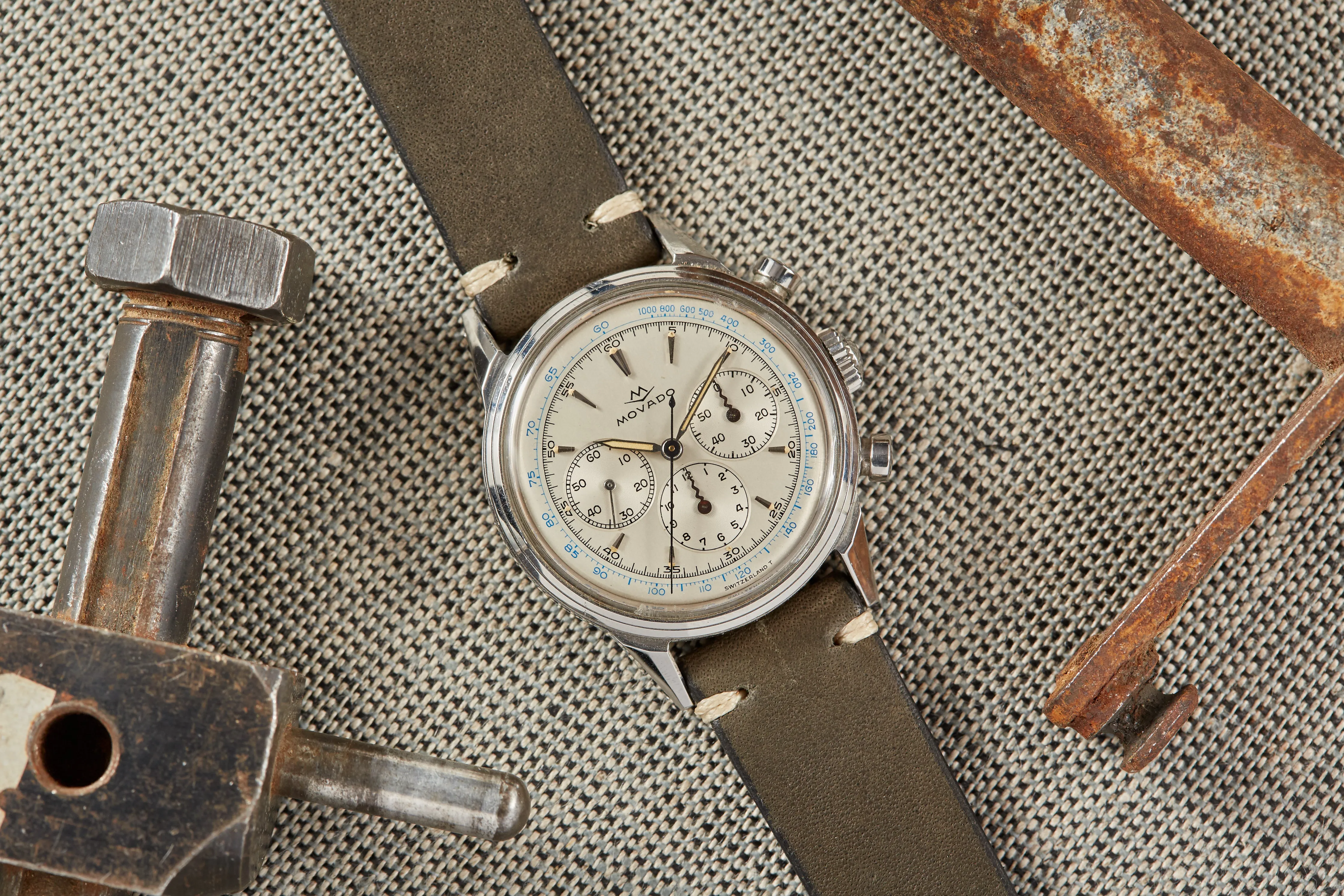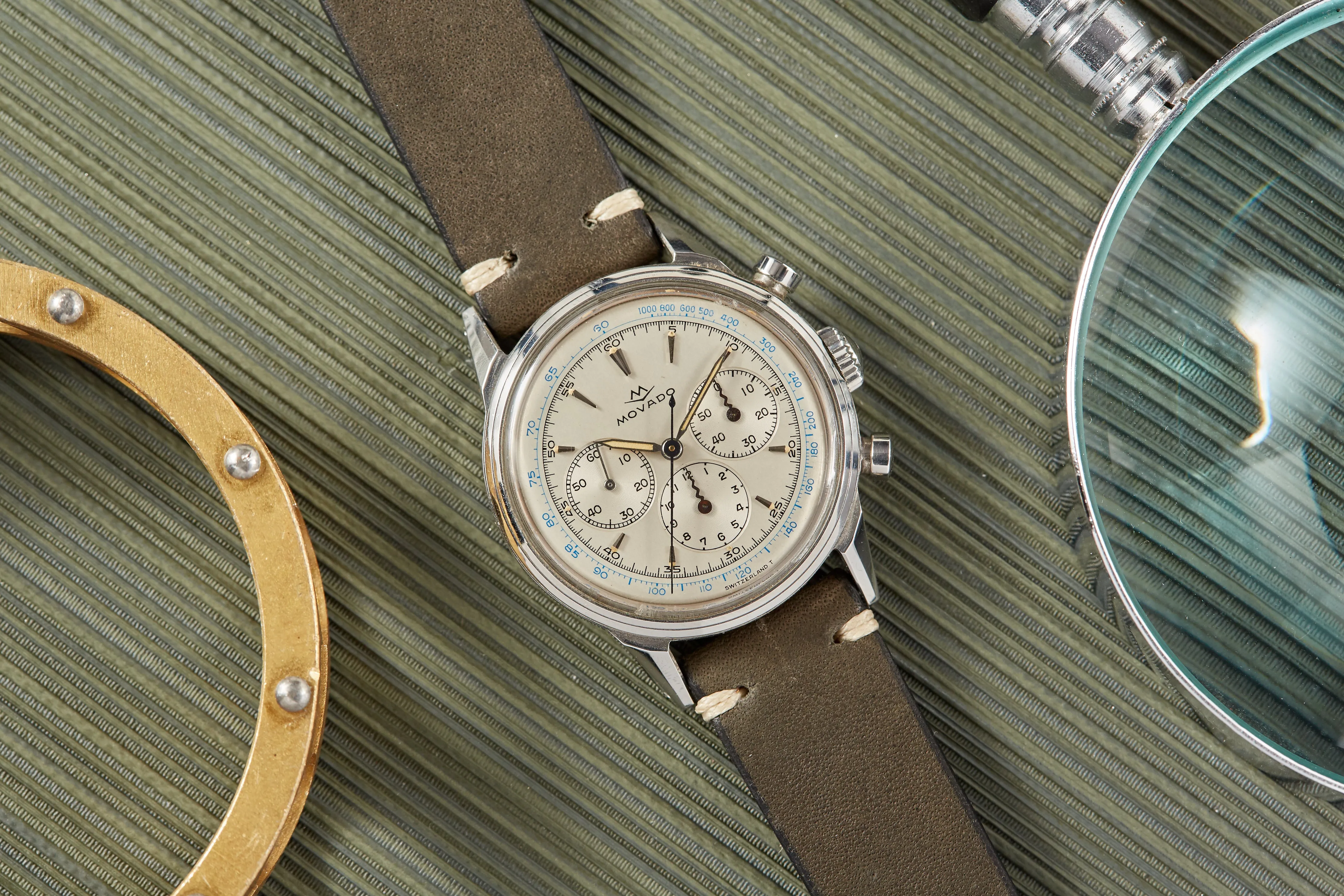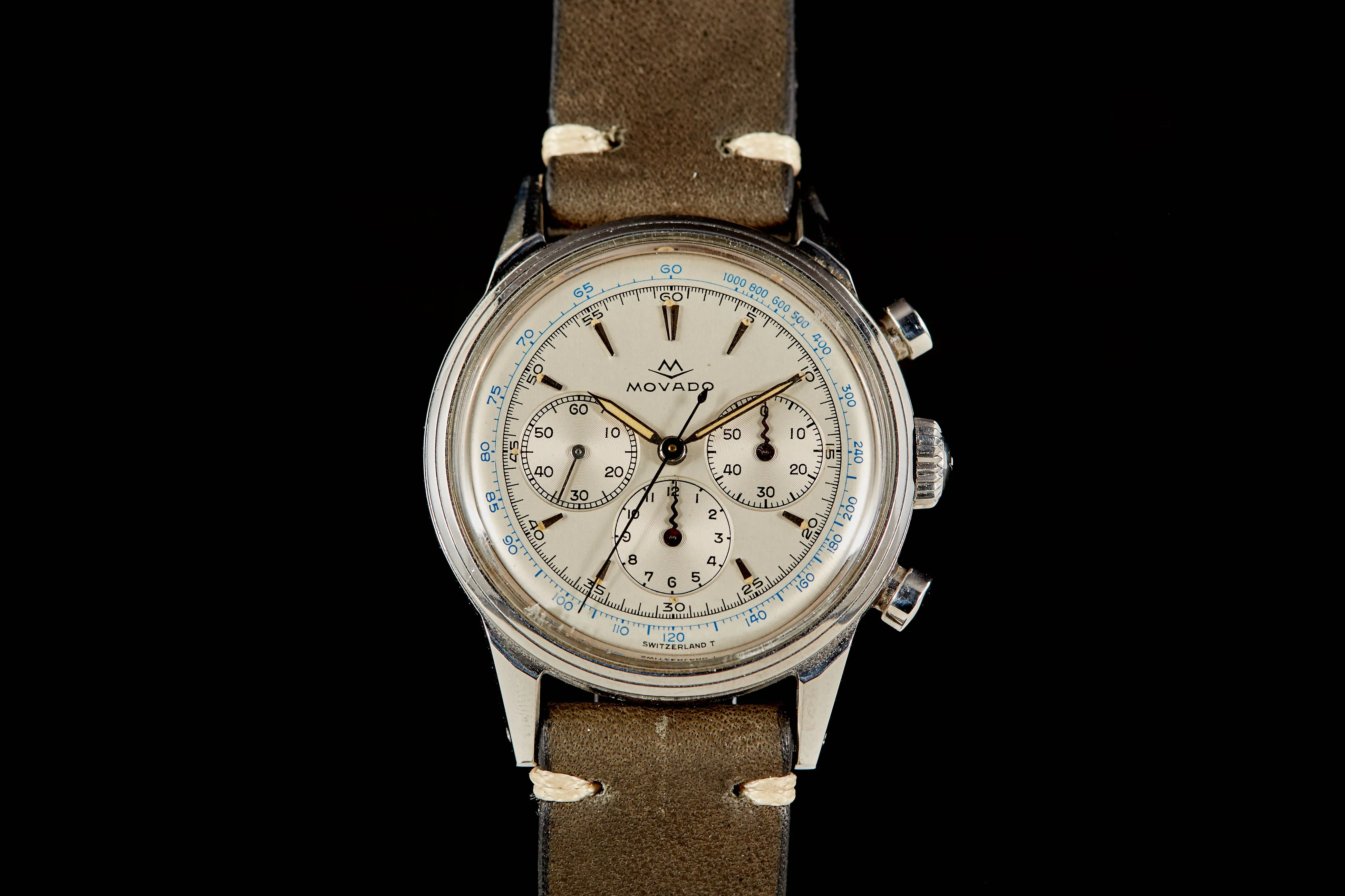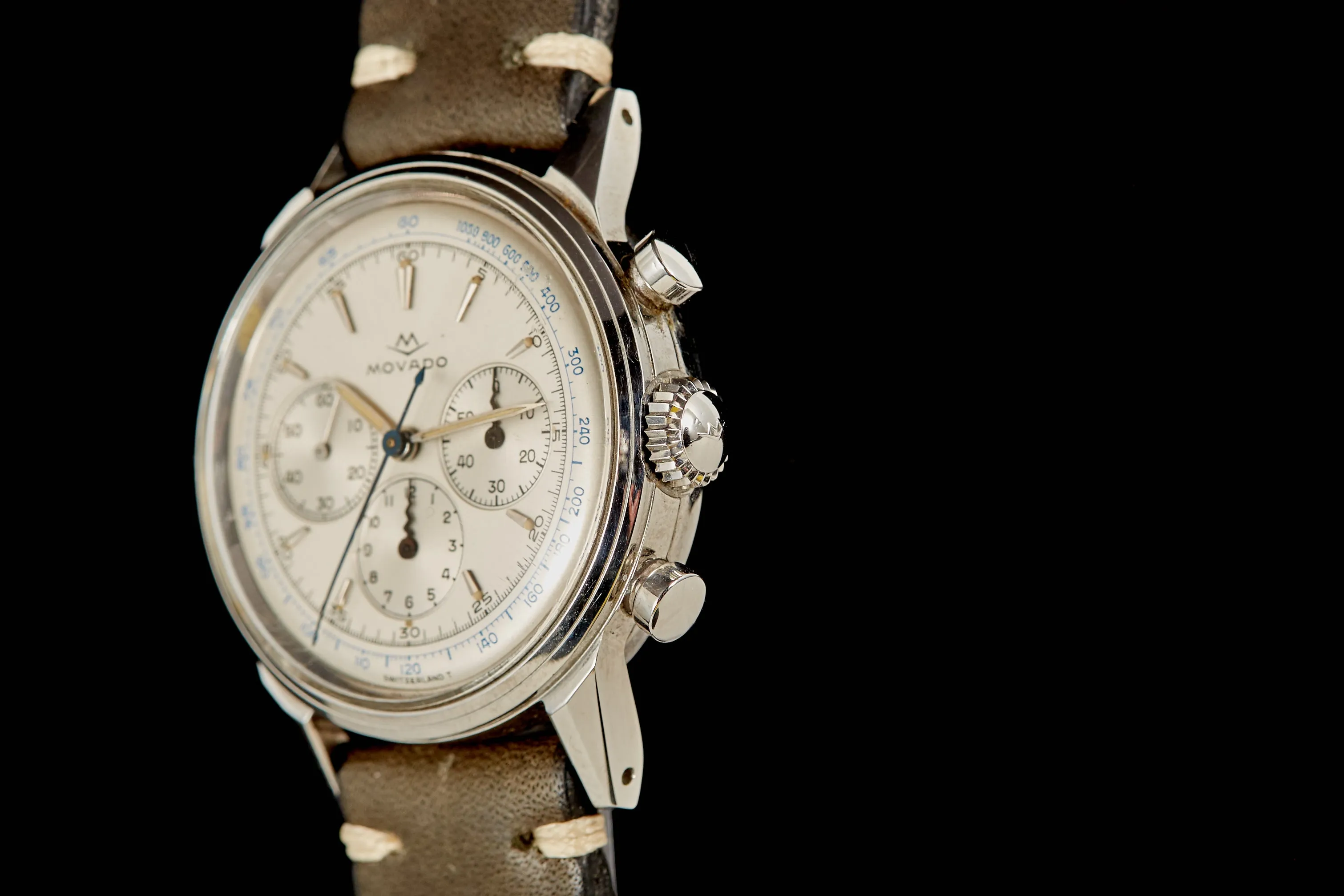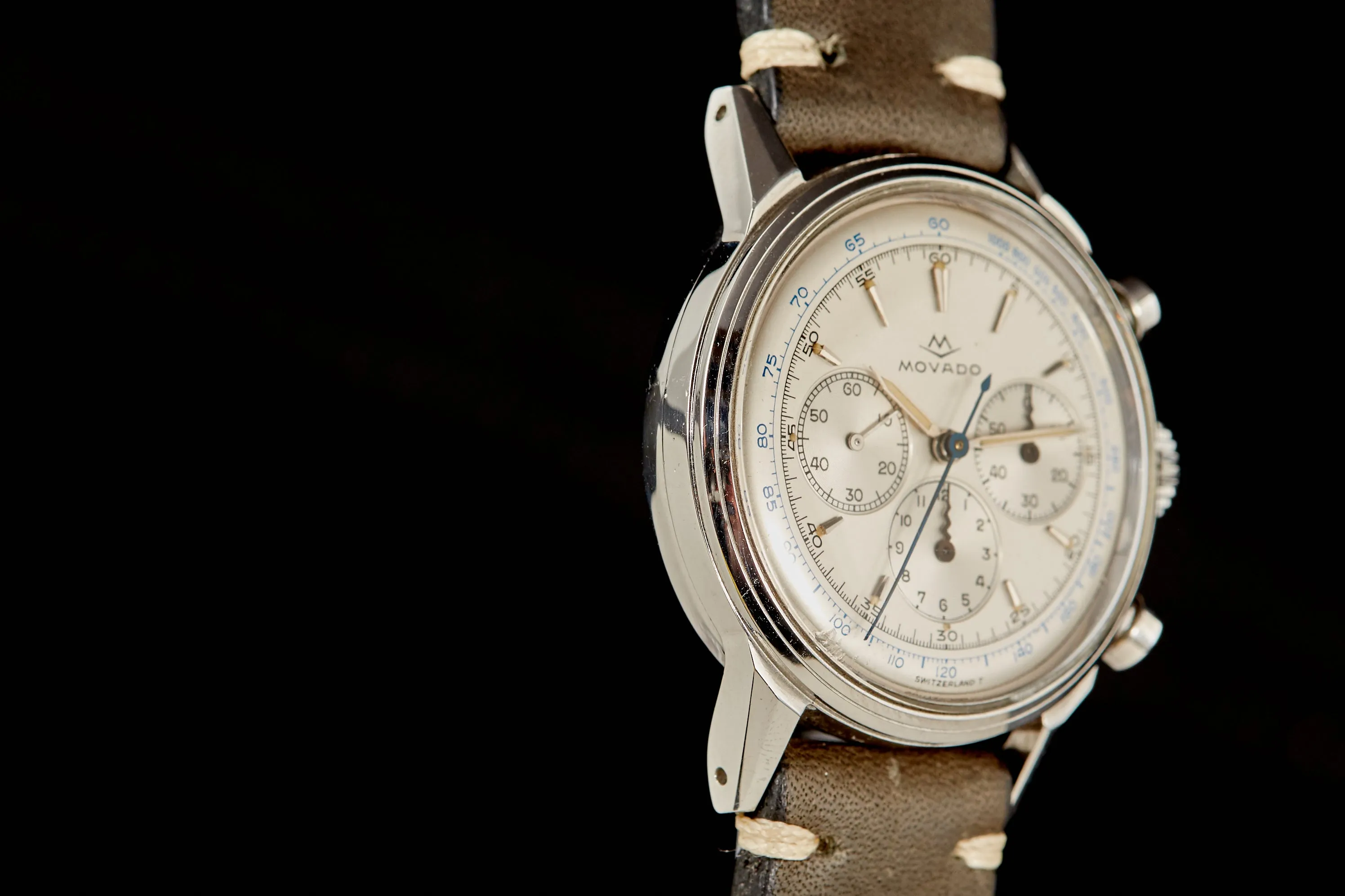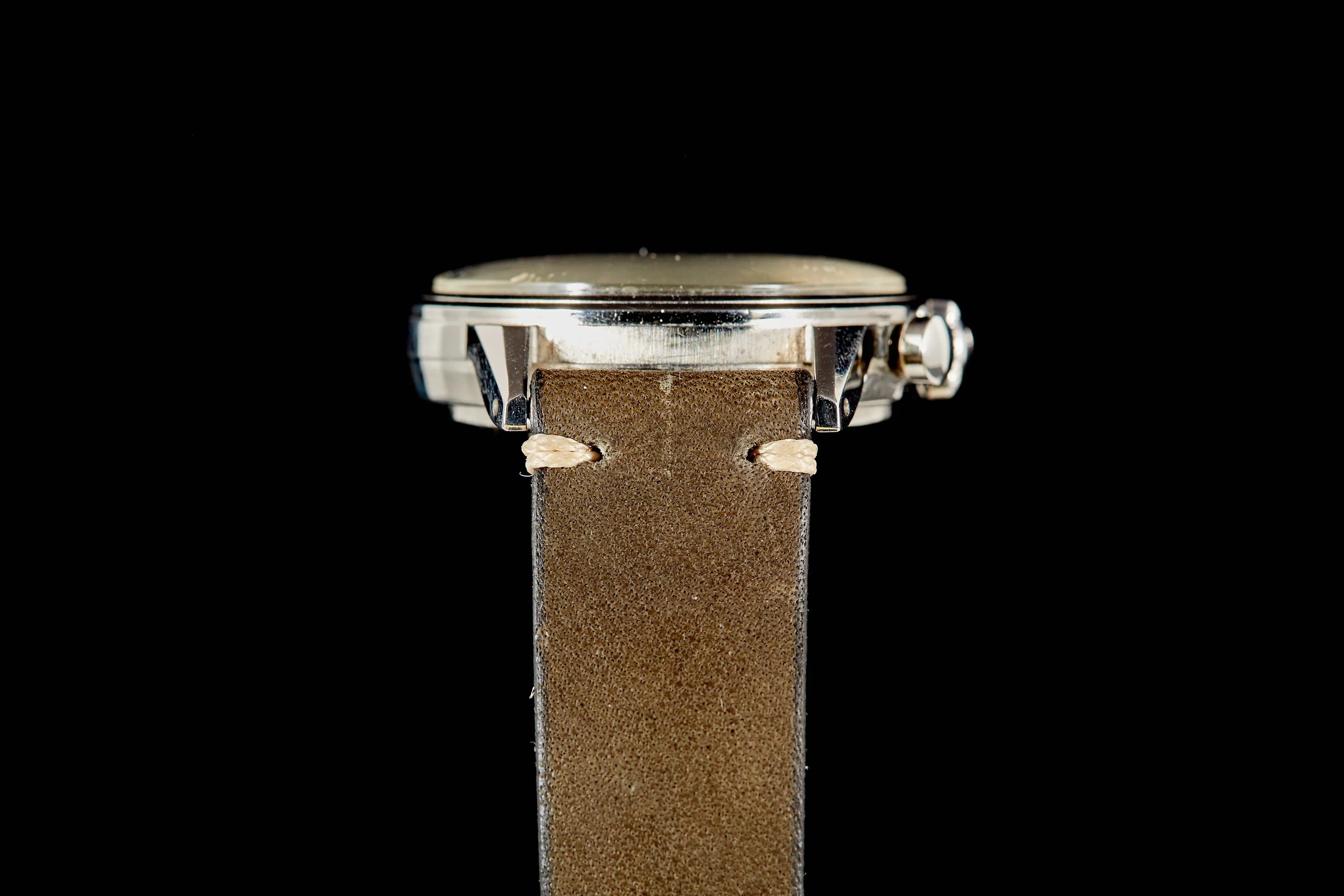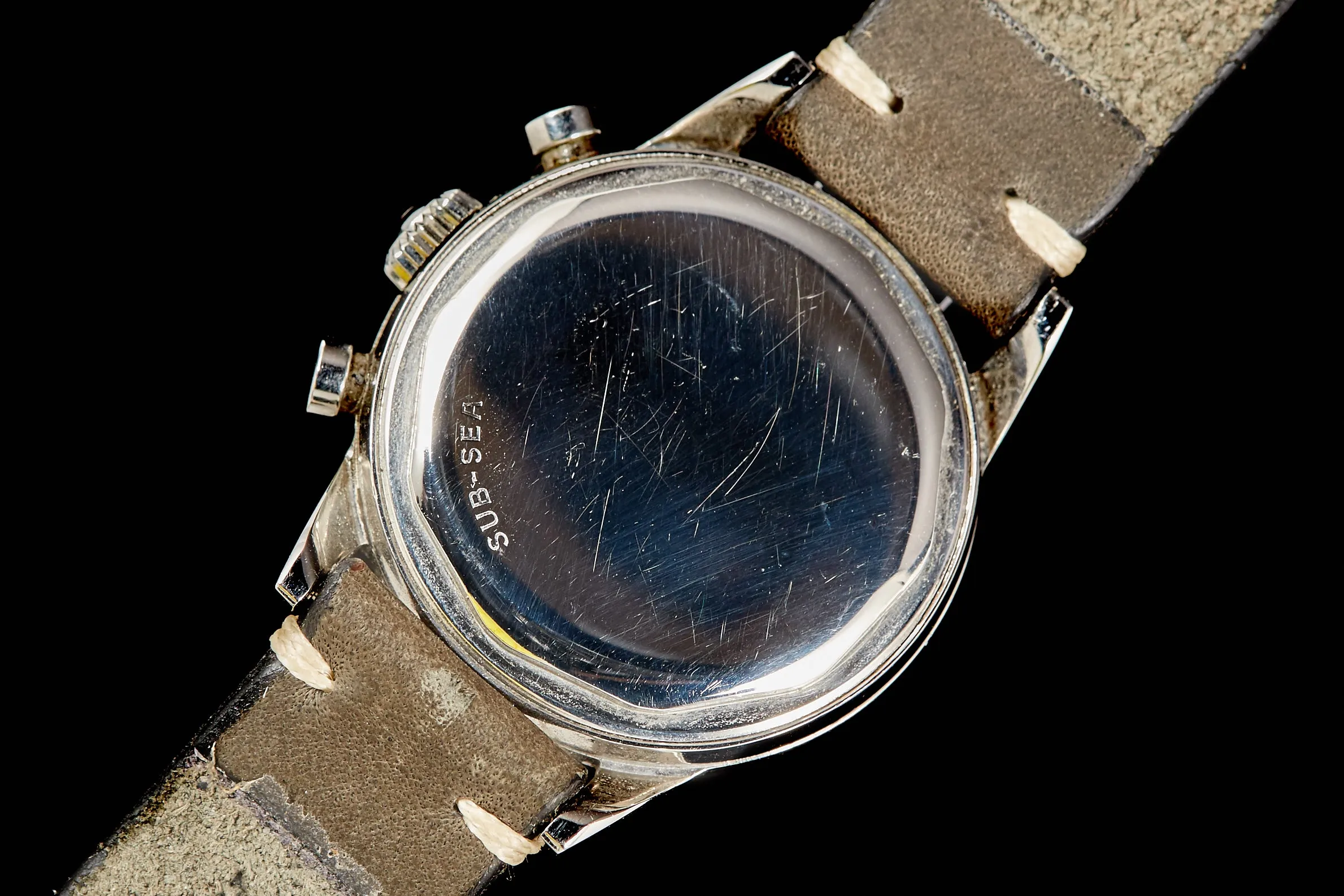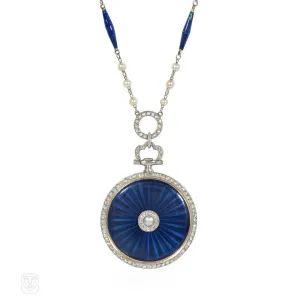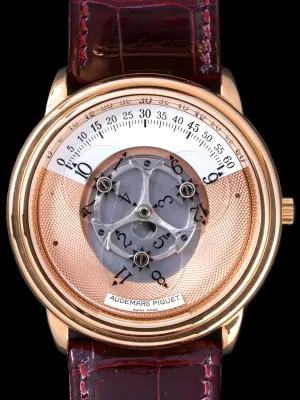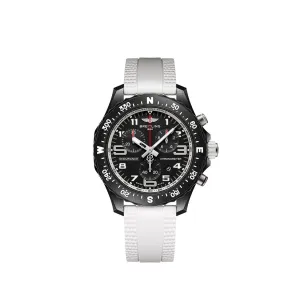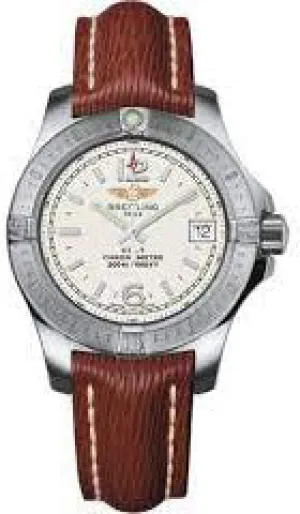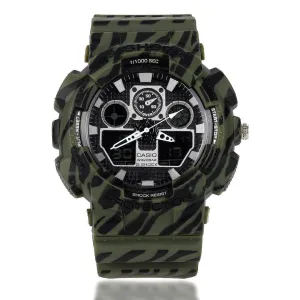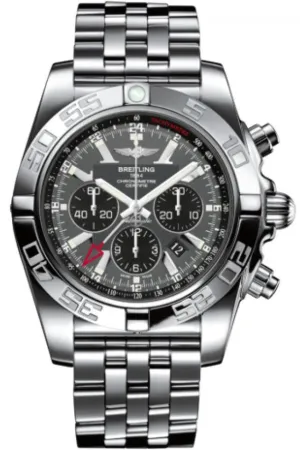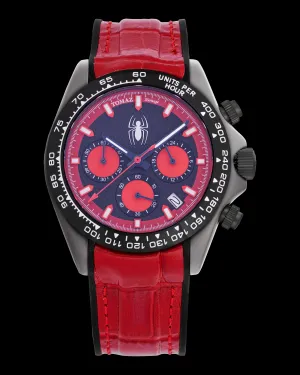Why We Love It
Everyone should experience a mid-century chronograph at some point in their life.
Contemporary chronographs are, for the most part, hulking things - beefed up with anti-shock protection, screw down pushers, and thicker cases to accommodate automatic winding mechanisms and chronograph modules. With few exceptions, modern chronographs just don't do it for us. Mainly because decades ago, Swiss manufactures were churning out complicated pieces with greater functionality in far more diminutive packages. Ask any serious collector and they'll tell you - what makes haute horology impressive is miniaturization - the very meaning of which seems to have been lost on the vast majority of brands today.
Featuring a 34mm François Borgel stainless steel case with faceted lugs, this Movado Sub Sea chronograph exhibits the very essence of mid-century chronograph design - better known from brands such as Patek Philippe (who, by the way, used Borgel cases on their waterproof chronographs at the same time). From its textured sub dials, dart indices, outer blue scale, short barrel pushers, signed crown, and its characteristic 'squiggly' 60-minute and 12-hour hands, fine details abound - resulting in a design that is simply beautiful.
Looking closely, you'll notice that the luminous material on the dial and handset has developed a rich creamy patination while retaining an exceedingly clean dial. This, dear friends, doesn't happen often - with M95s or any other chronograph from this era - it is an absolute time-capsule!
What Movado executed here is near perfection. High design, legibility, iconic movement, and a packaging size that will leave you scratching your head and wondering what the hell has happened in Switzerland these past few decades.
What more can you ask for?
The Story
While Movado is now best known as a producer of fashion watches like the Museum Watch, Movado's roots go much deeper than that. The company’s history reaches all the way back to 1881, when watchmaker Achilles Ditesheim opened a workshop in La Chaux-de-Fonds. His brothers Léopold and Isidore joined him in 1886.
Production from that point on proved how true the name brand was—it means "always in motion" in Esperanto. Throughout the 20th century Movado produced incredible mechanical timepieces. They gained notoriety for the sophistication of the equipment and technology they employed, including electric tools.
Unlike many of their counterparts, Movado's movements were designed and manufactured in-house.
In the late 1960s, they were acquired by Zenith, and enjoyed perhaps their greatest period of success as the subsidiary of that brand. Their chronographs (which used the famous Zenith El Primero movement), particularly, were successful sellers.

